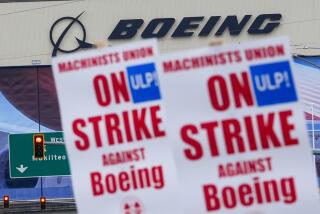Nissan Won This Round, but Now Must Deliver on Power-Sharing
- Share via
Six years ago, Nissan introduced worker participation into its management concept at Smyrna, Tenn. It took a risk that paid off in the election July 27 when Nissan workers voted 1,622 to 711 against joining the United Auto Workers union.
Somehow the image of American auto workers in cowboy boots and jeans, waving Old Glory while wearing red-and-white T-shirts with “Nissan” boldly printed on the front, carrying anti-union signs seems paradoxical.
Less than seven years ago, Vincent Chin, a Chinese-American engineer, was brutally beaten to death with a baseball bat by a frustrated, out-of-work Chrysler supervisor and his stepson in Detroit. They blamed Chin’s supposed Japanese countrymen for unemployment in the American auto industry.
Contrary to anti-union management consultants who would herald the vote as proof that the labor movement is already down for the count, the union election should serve as a signal to American industry
and organized labor that the U.S. worker will evaluate his options and choose the path that seems most likely to serve his self-interest.
In Smyrna, Nissan wages and benefits were perceived as comparable to the union package. The union however, focused unsuccessfully on job-related injury problems and speed-ups to gather its campaign momentum.
Pro-union forces would argue that six years is plenty of time for Nissan to brainwash and intimidate workers with little union experience and who live in a right-to-work state. However, unions have been unable to win representation elections in any contested Japanese-owned auto plant in the United States.
The task for the union is to re-examine the concerns and desires of the U.S. workers in the ‘90s.
Can American unions win union certification elections by trumpeting the same old call that the company is the enemy and the union the friend of the working class?
Can U.S. industry compete with foreign corporations while maintaining the same old adversarial relationship with their employees and their unions?
The challenge for Nissan is to sustain the loyalty of their employees within the parameters of the team concept, and to address the concern about on-the-job injuries and speed-ups that more than one-third of their employees were looking to the union to resolve.
Can Nissan at Smyrna continue to hold the support of its workers in the future without being expected to steer a course even further in the direction of power-sharing?
The UAW received more than one-third of the votes, and sent a strong message to the company that a sizable group of workers are looking for help. The union will most assuredly be regrouping to seize the moment when they sense that disenchantment with the system is beginning to take root.
The team concept is a double-edged sword. Although some workers and their unions have been willing to offer the company more needed flexibility to operate its plant, what they demand in return is more power-sharing regarding operations and management.
This domestic perestroika can lead to a much-improved level of quality and productivity, job satisfaction and security, and a better labor-management relationship. But the course must be pursued with skill, sincerity and genuine power-sharing. Disillusionment, bitterness and a return to adversarial relationships is inevitable if one side sees it as simply the most advanced form of weaponry in the age-old power struggle between labor and management.
Nissan can expect more tests of its team concept. Once you begin to dance with the bear, you dare not stop the music.






